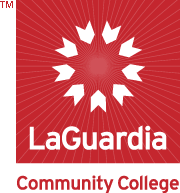Document Type
Assignment
Publication Date
3-2020
Abstract
General Chemistry is a two-semester course (General Chemistry I, SCC 201 and General Chemistry II, SCC 202) required for majors in Biology and Environmental Sciences.
This lab experiment, aligned to LaGuardia Community College’s Inquiry and Problem Solving Core Competency and Written Communication Ability was designed for General Chemistry I (SCC 201 Honors) course. Honors courses in LaGuardia emphasize critical thinking, analytical writing, and introduce students to research. This lab experiment provides an opportunity for students to engage in hands-on laboratory work, to develop laboratory skills, and to conduct research in the classroom by using two water soluble porphyrins to detect transition metal ions in a solution and on a paper support. Overall, this experiment was designed to meet the demand for undergraduate research experiences and to engage all the students in addressing a research question or problem that is of interest to the scientific community.
In order to demonstrate their learning, students write a formal lab report which includes an understanding of experiment procedures (methods and techniques), safety hazards, instrumentation, understanding of concepts and theories gained by performing the experiment, collecting data through observation and/or experimentation, interpretation of the data (Ultraviolet-visible spectra), analysis of the data in tables and graphs, and drawing conclusions and perspective from the experiment. The knowledge students gain during this lab experiment will be useful to connect with future chemistry courses and can also be utilized to do research. The lab write-up is deposited for the assessment of the Written Communication Ability to which SCC 201 is aligned.
This experiment also raises awareness about a global concern. Students detect transition metal ions in aqueous solutions by use of porphyrins. Due to rapid growth in technology and industrialization, transition metals are used in large amounts in a variety of electronic products. The improper preservation of the industrial wastes leads to accumulation of these metals into water resources, which can create danger to human health and the environment. Therefore, there is a need to carefully monitor and frequently detect transition metal ions content in the environment.
This lab experiment was implemented in an Honors section of General Chemistry SCC 201 and was worth about 3.5% of the final grade. The students are likely to spend 3 hours completing the experiment in the lab and another 3-4 hours completing the lab write-up.
The Program Goals that this assignment targets:
1. To provide training to the students in various lab techniques and how to utilize these techniques to conduct research.
The Student Learning Objective (s) that this assignment targets:
1. Students will have an enhanced conceptual understanding of the theory to practice relationship and will achieve higher level reasoning skills.
2. Students will be able to develop their practical competence in laboratory work.
3. Students will be able to collect data through observation and/or experimentation, preparation of solutions of known concentration, characterize the compounds by UV-vis spectra, and draw conclusions and perspective of the experiment.
4. Communicate their results through the formal lab report format of: Introduction, Chemicals, Procedure, Data, Discussion and References.
LaGuardia’s Core Competencies and Communication Abilities
The Course Objective (s) that this assignment targets:
1. Based on the principles of environmental chemistry, students will be able to detect the transition metal ions using a porphyrin as a sensor and explore the complex connections between chemistry and real world issues.
2. Observe, collect, analyze and interpret experimental data and graph the UV visible spectra using Microsoft Excel.
Creative Commons License

This work is licensed under a Creative Commons Attribution-Noncommercial 4.0 License
Included in
Biology Commons, Chemistry Commons, Environmental Sciences Commons



Comments
This resource is part of the Learning Matters Assignment Library.